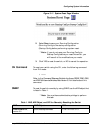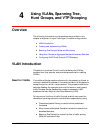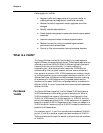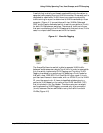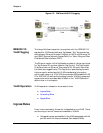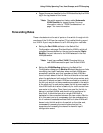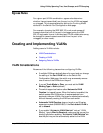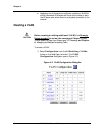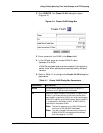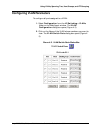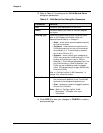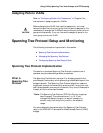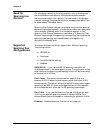
Avaya P550R, P580, P880, and P882 Multiservice Switch User Guide, Version v5.3.1 4-7
Using VLANs, Spanning Tree, Hunt Groups, and VTP Snooping
Egress Rules
For a given port/VLAN combination, egress rules determine
whether frames transmitted from the port on the VLAN are tagged
or untagged. This is accomplished by setting the Trunking Mode
attribute in the Switch Port Configuration web page.
For example, choosing the IEEE 802.1Q trunk mode causes all
frames transmitted out of the port to be tagged using the IEEE
802.1Q tag header format. Individual port/VLAN combinations may
be changed to cause frames transmitted from the port to be
untagged (or clear mode).
Creating and Implementing VLANs
Adding users to VLANs include:
■ VLAN Considerations
■ Creating a VLAN
■ Assigning Ports to VLANs
VLAN Considerations
Be aware of the following issues when configuring VLANs:
■ If multiple VLANs are statically bound to a port and you change
the setting of the Port VLAN field on the Switch Port
Configuration Web page, the switch may erroneously remove
one or more of the VLANs from the port.
■ If you set Trunk Mode to Clear, you must set the VLAN
Binding Type to Static (default).
■ The switch supports a feature called Automatic VLAN
Creation for tagged frames. When this feature is enabled, the
switch creates new VLANs when it receives packets from
previously unknown VLANs. Vlan’s can be created automatically
without manually creating the VLAN on each switch.
■ Automatic VLAN Creation does not work on an 80-series
supervisor module (M8000R-SUP) if the Port default VLAN is
set to discard.
■ If you enable “AUTOMATIC VLAN CREATION” AND set “VLAN
Binding” type to Bind to Received, make sure that you set the
binding type before enabling “A
UTOMATIC VLAN CREATION"OR
else the port may not be automatically added to the VLAN.



